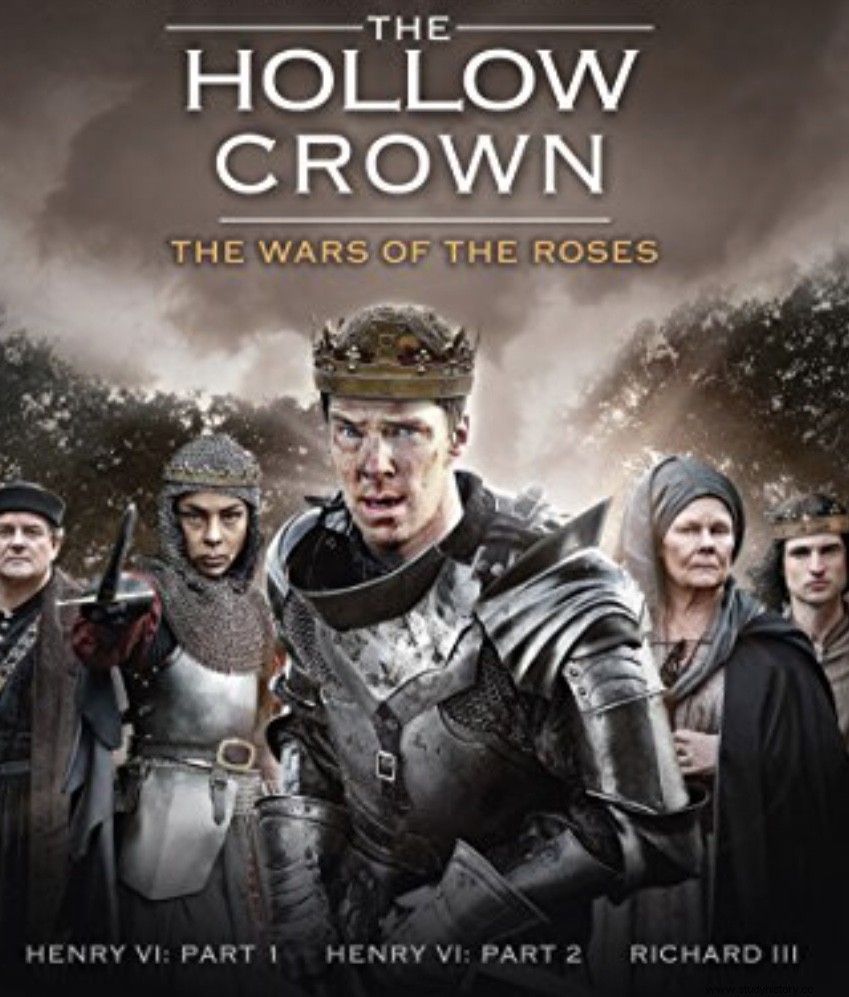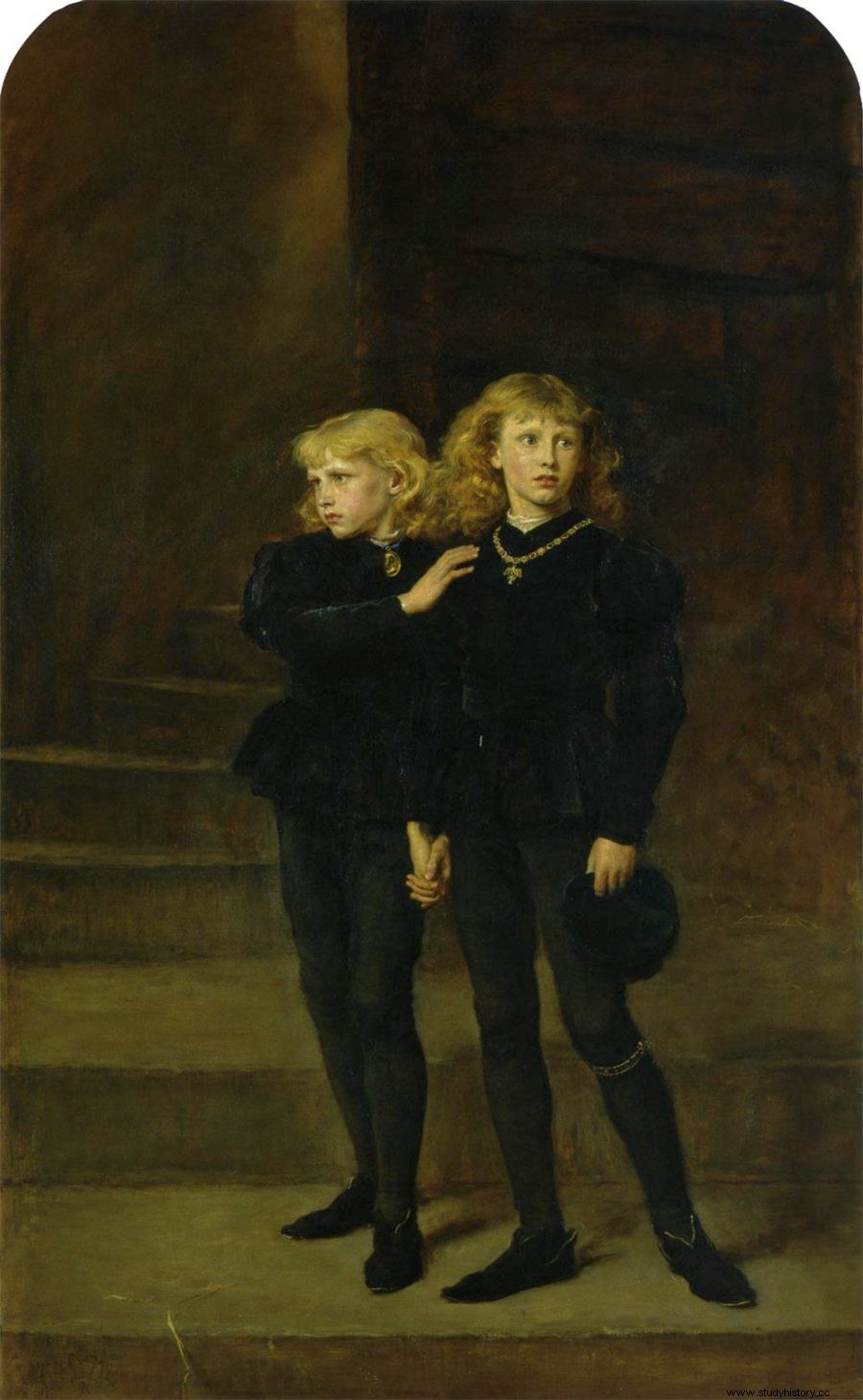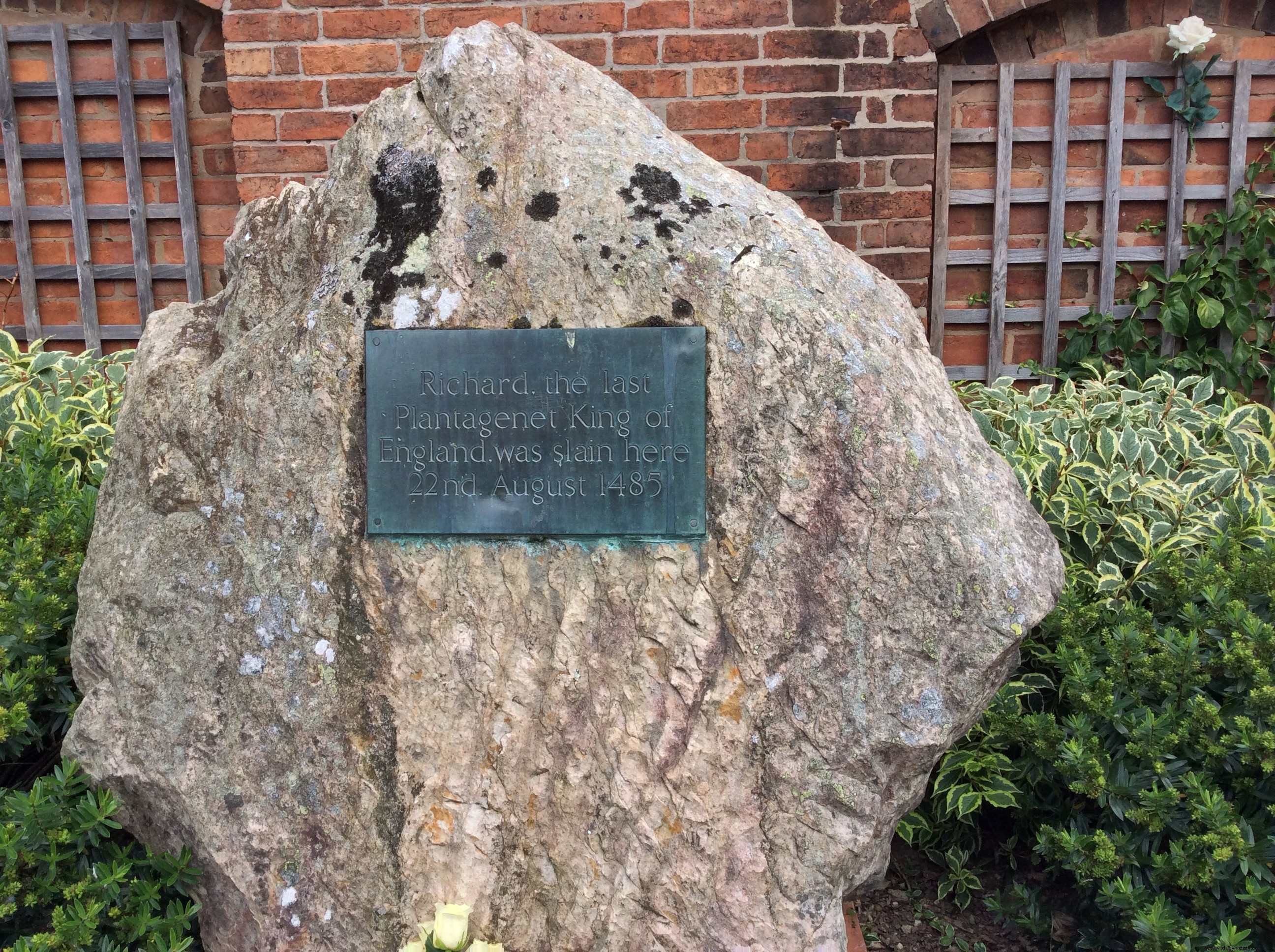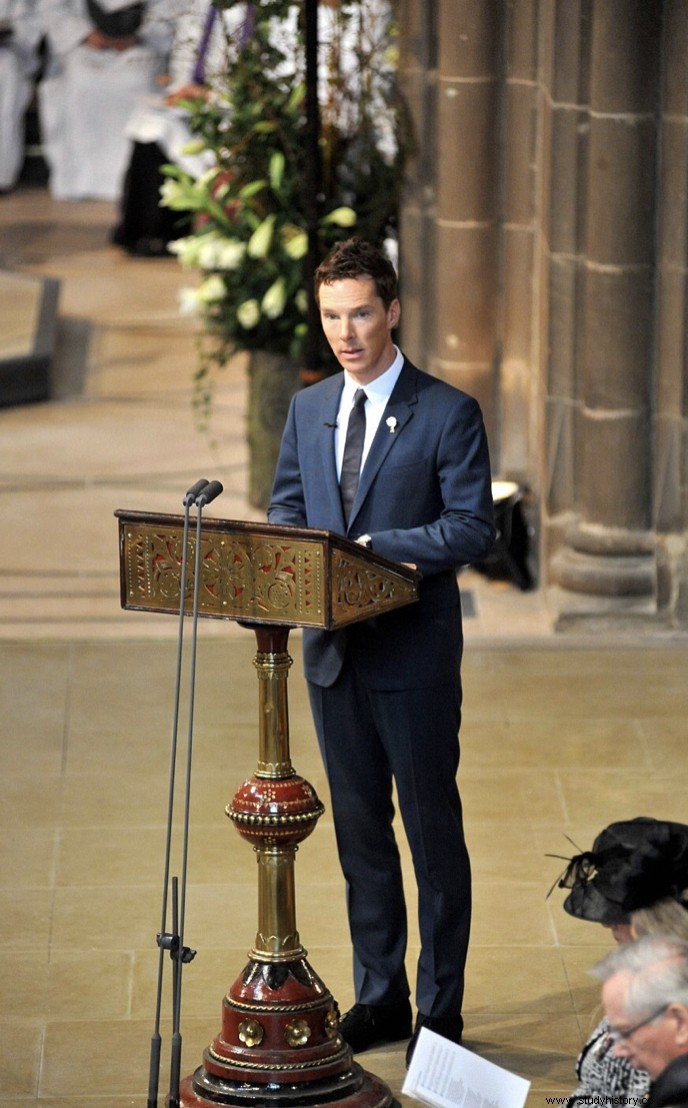Currently on TVE's La 2. The second season of the BBC television series "The Hollow Crown" is being watched, an adaptation of Shakespeare's plays about the last years of the reign of the Plantagenet dynasty and the rise to the throne of the Tudors . Well-known actors such as Jeremy Irons, Judy Dench, Hugh Bonneville, Tom Hiddleston and Benedict Cumberbacht (who plays the quintessential villain of Shakespeare's play, Richard III) participate in it.
Go ahead, I understand that Shakespeare was a playwright and not a historian, who wrote fiction and was not subject to the need for historical truth. This work was written mostly during the mandate of Elizabeth I of England, a queen belonging to the Tudor dynasty and refers to the dramas starring the kings of England.

The Tudors had been on the throne since 1485 when their first monarch, Henry VII, defeated in battle and dethroned the last Plantagenet king, Richard III, killed in battle (Bosworth, August 22, 1485). The right to the throne of Enrique VII was quite doubtful. His mother, Margaret Beaufort, belonged to the branch of the Lancastrians who fought in the Wars of the Roses, but she did not even hold the best right within that branch (and there is even a document from Henry IV that excludes that family from the right to the throne). English).
For this reason, the entire environment and propaganda of the Tudors needed to provide a bath of legitimacy to the actions of Henry VII (most of the English were illiterate at the time, so theatrical performances were a powerful means of transmitting the rulers' ideas. It was necessary for it to sink in that the first Tudor did not simply usurp the throne of England, but what he did was act as an arm of justice to depose a treacherous king and a merciless murderer.
 Thus, the different works of Shakespeare that deal with the Wars of the Roses (1455-1485) convey to us a worse than negative image of Richard III, the monarch whom Henry VII deposed at Bosworth. Both the work dedicated to the last Plantagenet (Richard III) such as the one dealing with the representative of the House of Lancaster who preceded Henry VII (Henry VI ) draw us a cunning, hunchbacked and ruthless Richard III, capable of cold-bloodedly killing his enemies (from the son of Henry VI to his own brother George of Clarence) and eliminating anyone who stood in the way of his ambitions (his nephews the princes of the Tower and his own wife).
Thus, the different works of Shakespeare that deal with the Wars of the Roses (1455-1485) convey to us a worse than negative image of Richard III, the monarch whom Henry VII deposed at Bosworth. Both the work dedicated to the last Plantagenet (Richard III) such as the one dealing with the representative of the House of Lancaster who preceded Henry VII (Henry VI ) draw us a cunning, hunchbacked and ruthless Richard III, capable of cold-bloodedly killing his enemies (from the son of Henry VI to his own brother George of Clarence) and eliminating anyone who stood in the way of his ambitions (his nephews the princes of the Tower and his own wife).
Surely Richard III was not a saint and some of the events he starred in cast shadows over his person (how he appropriated the throne by illegitimating his nephews, the deaths of different notables of the kingdom who could oppose his claim to wear the crown or the doubts , about which we will return, regarding what happened with the princes of the Tower), but neither can a figure of the fifteenth century be judged with the eyes of the 21st century nor, of course, can the reputation of the character carved throughout the centuries from a play. I am aware that there are other sources, such as Thomas More, and I have commented on them in several blog posts (especially in the second one dedicated to Perkin Warbeck) but today I am going to focus on Shakespeare.
Although, as has been said, the author of Stratford-upon-Avon was not a historian but a playwright, the truth is that a good part of the events did not unfold in the way described in his works or, if they did, it was for and in circumstances very different from those that his dramas imply. Like this:

– According to Shakespeare, on May 4, 1471, after the Battle of Tekwesbury, Richard, along with his brothers Edward IV and George of Clarence stabbed and murdered King Henry VI's son, Edward, Prince of Wales. Although it is true that the prince died in that battle and was even forcibly removed from Tewkesbury Abbey where he had taken refuge, contemporary sources indicate that Richard was not present when the prince fell. /P>
– Shakespeare recounts how on May 21, 1471, Richard assassinated King Henry VI in the Tower of London, gloating over the corpse afterwards r of the dead monarch. Although everything points to the fact that Henry VI was actually killed in the Tower and that Richard was responsible for that action, the truth is that the order to execute his rival came directly from the king (and Richard's older brother). Edward IV. Ricardo was in charge of carrying out the king's orders in his capacity as Bailiff of the Kingdom, although it is unknown if he did it personally or entrusted the task to third parties. There is also no evidence of his reaction to the death of Henry VI.
– In Shakespeare's play, on February 18, 1478 Richard arranges the death of his brother George of Clarence in the Tower of London (according to some sources by immersing him in a malvasia cask) on the grounds that a prophecy stated that G (for George) would kill the children of Edward IV. In reality, George of Clarence, who had sided with the Lancastrians on several occasions during the War of the Roses in rebellion against his brother Edward IV, was sentenced to death by Parliament after being tried and found guilty of treason. Ricardo had nothing to do with either his trial or his execution; Quite the contrary, it seems that his reaction when he found out that his brother had been executed was one of anger against his other brother. More than one source suggests that the relationship between Ricardo and Jorge was (despite their differences) very close as a consequence of what they had suffered when they were children and the first battles of the War of the Roses were unfavorable to their side (his father Richard Plantagenet and one of his brothers had been killed at the Battle of Wakefield in 1460 and both had fled into exile).
– Shakespeare accuses Richard III of ordering the execution of Lord Hastings on June 13, 1483, after accusing him of performing witchcraft against him with a rotting arm. In fact, Richard, as Lord Protector of the Realm, accused Hastings of treason in a session of the Royal Council, ordered by the perquisites of his office that he be immediately executed, and subsequently provided the Council with evidence that Hastings was indeed plotting against him. /P>
– In Shakespeare's play Richard III is responsible for the death by poisoning of his wife Anne Neville , after spreading the rumor that she was ill, so that he could marry her niece, Edward IV's daughter, Elizabeth of York. In fact, all the evidence points to Anne dying of tuberculosis, as she had happened to her sister a few years earlier. In addition, after her death Ricardo did not get engaged to Elizabeth of York, but to a Portuguese princess, despite the fact that if he had indeed married his niece (something not unusual at the time) he would have obtained a great political advantage. In fact, his rival Henry Tudor ended up marrying Elizabeth herself.

– Surely the star theme that has contributed to cementing the black legend of Richard III is the disappearance of his nephews, those known as Princes of the Tower of London, for whose death Shakespeare holds Richard responsible. The subject, which would give for a book and that in no case would be conclusive, is treated in depth in the linked blog entry, but although Ricardo is of course one of the main suspects (he had the opportunity and the reason), the truth is that there is no record of what happened to the boys, a subject on which disparate and fiery opinions can still be found in England today. In recent years, theories have emerged that point to others possibly responsible for the death of the young people (Henry Tudor, Margaret Beaufort, the Duke of Buckingham) or even who points to the possibility of the princes' survival.

– Finally, Shakespeare narrates how when he was defeated by Henry Tudor in the battle of Bosworth that cost him his life, Richard cowardly tried to flee and pronounced a famous phrase:«a horse, my kingdom for a horse». However, all accounts of the battle note that Richard fought gallantly at Bosworth, and some point out that when his servants offered him a horse to flee, Richard gallantly refused the offer, declaring that he would live or die as King of England that day.
One theory proposes that Shakespeare's Richard III was actually intended as a veiled criticism of the leading scourge of English Catholics in the time of Elizabeth I, Robert Cecil. Some argue that Shakespeare was secretly loyal to the Catholic religion and that he used the play Richard III to attack Cecil (who according to one description was hunchbacked). If so, the playwright was unaware of the damage it would do to the reputation of the last Plantagenet for years to come.

And regarding the physical defect (the hump) that according to Shakespeare afflicted the monarch, in 2012 the remains of Richard III were found in a car park in Leicester. The linked post details the process that led to the discovery of his skeleton five hundred years after his death, in what was by no means a chance find. After subjecting the remains to multiple forensic examinations to determine if they belonged to Richard III and the rest of the data they could provide, it was established that the king had received multiple injuries and that he suffered from a type of moderate scoliosis, but not a hump like the one that Shakespeare pointed out.
After confirming that the remains found were those of Richard III and after some discussion about whether the monarch should rest in Leicester or York, a solemn and massive act was held to bury the last Plantagenet in Leicester Cathedral. The person in charge of giving the funeral speech remembering the deceased monarch was a distant descendant of Ricardo III. Interestingly, it is the same person who gives life to the king in the series that gives rise to this entry and who appears in the photo that heads the article:the actor Benedict Cumberbacht.

